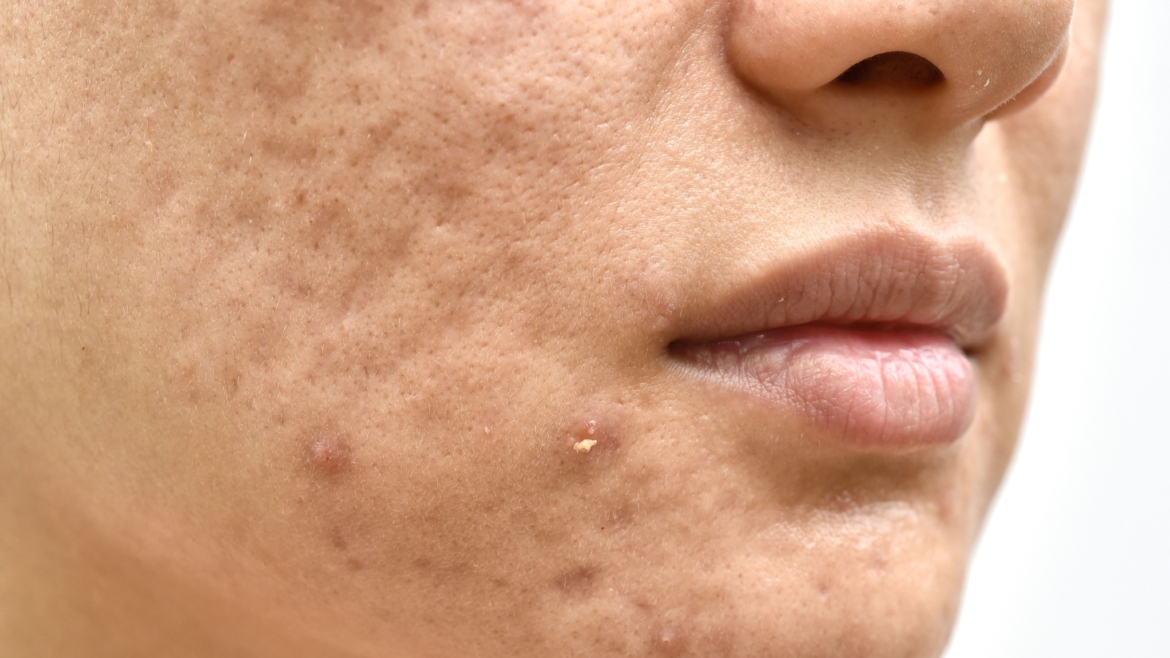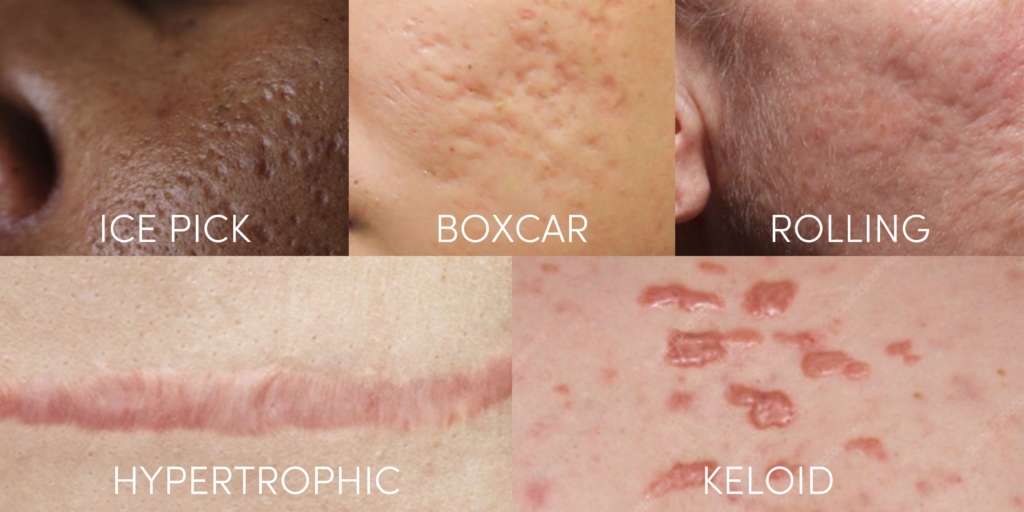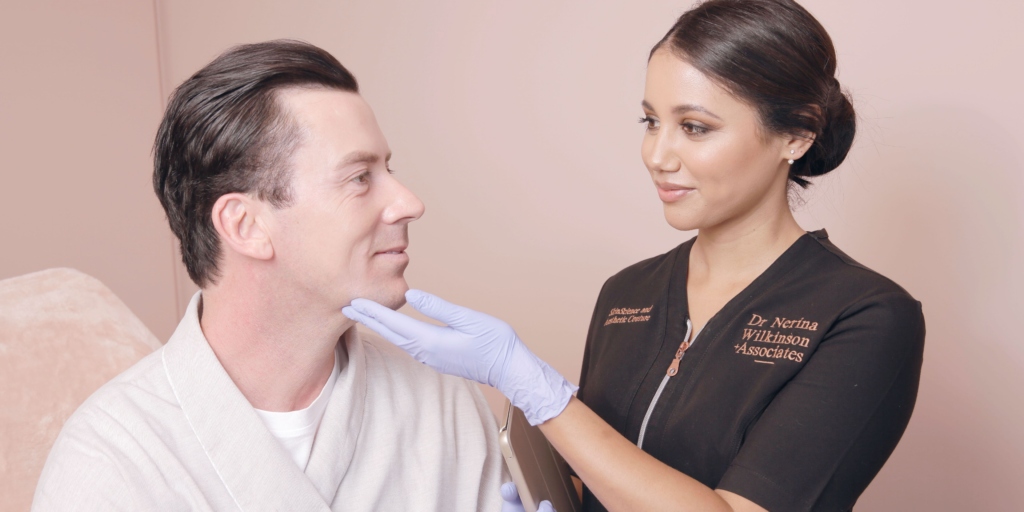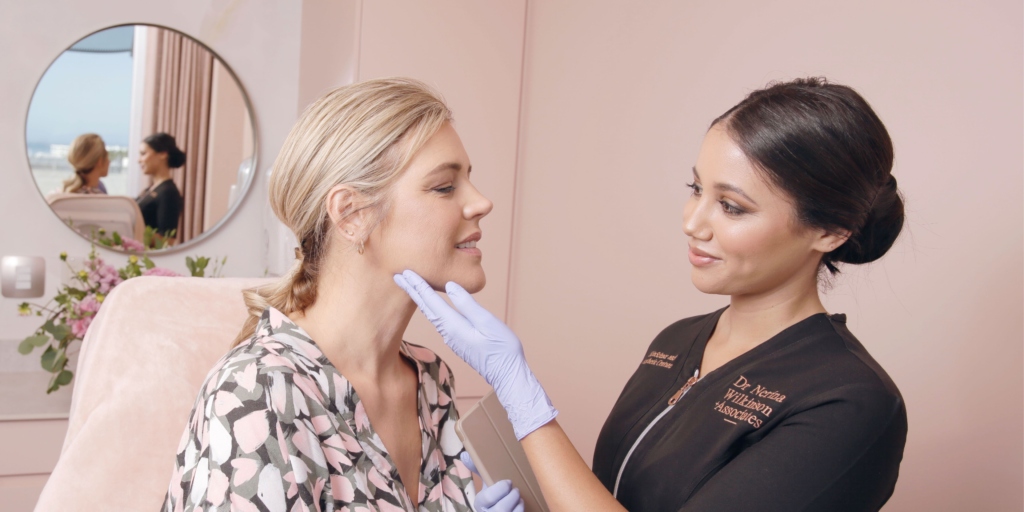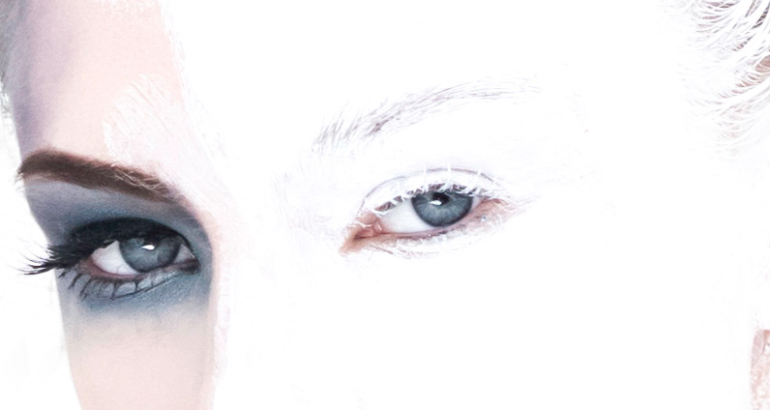by Senior Skincare Specialist, Bianca Erispe
Acne scarring stands as a distinctive outcome of acne, separating it from other dermatological concerns and demanding targeted treatments. Understanding the fundamentals of acne, including its formation and types is important for effective scar prevention.
Let’s delve into the progression of acne to scarring and the significance of early intervention.
Table of contents
- UNDERSTANDING ACNE AND HOW IT LEADS TO SCARRING
- MOST COMMON CAUSES OF ACNE SCARRING
- FACTORS CONTRIBUTING TO ACNE SCARRING
- TYPES OF ACNE SCARRING
- TREATMENT OPTIONS FOR ACNE SCARRING
- PERSONALISING YOUR ACNE SCAR TREATMENT PLAN
- ASSESSING YOUR ACNE SCAR TYPE AND SKIN HEALTH
- LIFESTYLE CHANGES TO SUPPORT ACNE SCAR TREATMENTS
- MONITORING TREATMENT PROGRESS
- OVERCOMING CHALLENGES AND SETBACKS
- DEALING WITH ACNE SCAR TREATMENT SIDE EFFECTS
- MANAGING ACNE SCAR TREATMENT EXPECTATIONS
- WHERE TO START
UNDERSTANDING ACNE AND HOW IT LEADS TO SCARRING
Acne begins with blocked pores due to excess oil, dead skin cells, and sometimes external factors like dirt or makeup. Bacteria, particularly Propionibacterium acnes, thrive in these clogged pores, leading to inflammation, redness, swelling, and pus-filled lesions known as pimples. Severe or prolonged inflammation can damage surrounding skin tissue, causing scarring.
Different types of acne, such as comedonal acne with non-inflammatory lesions and cystic acne with deep, painful nodules, can lead to scarring, especially severe forms like cystic acne. Early intervention with skincare routines, topical treatments, and medical interventions can control inflammation, reduce bacterial colonization, and prevent scarring.
MOST COMMON CAUSES OF ACNE SCARRING
Severe, untreated acne, particularly inflammatory types like cysts and nodules, can lead to deep scarring by damaging the skin’s underlying structure. These deep lesions penetrate the skin layers, causing extensive damage and inflammation beyond the surface.
In severe cases, the body’s attempt to repair the damaged tissue through collagen production may lead to abnormal collagen deposition and scar formation, resulting in deep scars such as atrophic or hypertrophic scars. Timely treatment and management of severe acne are crucial to reduce inflammation, minimize tissue damage, and prevent the formation of deep scars.
Improper acne management, including picking or squeezing blemishes, can exacerbate skin trauma, disrupt the healing process, and increase the risk of scarring.
FACTORS CONTRIBUTING TO ACNE SCARRING
Genetic predispositions, skin type, and acne severity significantly influence an individual’s susceptibility to scarring. Genetic factors impact how the skin reacts to inflammation and healing processes, increasing the likelihood of scar formation, especially in those with a family history of severe acne scarring. Certain skin types, like oily or combination skin, produce more sebum, heightening the risk of acne and scarring.
Additionally, the severity of acne, categorized from mild to severe, directly correlates with scarring likelihood. Severe forms, such as cystic acne, tend to cause deep permanent scars compared to milder types like comedonal acne.
TYPES OF ACNE SCARRING
This section will outline the distinct features of various types of acne scars, such as atrophic, hypertrophic, and keloid scars. It will discuss their formation process, typical appearance on the skin, and the importance of accurately identifying scar types for effective treatment.
Atrophic scars
Atrophic scars, including ice pick, boxcar, and rolling scars, manifest as indentations due to the skin’s failure to regenerate tissue effectively. They commonly appear in acne-prone areas, notably the face, as a direct consequence of acne’s damaging impact on the skin structure.
ICE PICK SCARS: Ice pick scars are characterized as deep, narrow indentations that penetrate into the dermis, resembling puncture wounds. These scars typically result from severe acne lesions that have caused localized collagen loss in the skin. When an acne lesion, such as a cyst or a deeply inflamed pimple, ruptures deep within the skin, it can damage the surrounding tissue and collagen fibres. As the skin attempts to heal from this damage, it may not regenerate tissue effectively, leading to the formation of these deep, narrow scars.
BOXCAR SCARS: Boxcar scars are characterized as round or oval depressions in the skin with sharply defined edges. These scars result from widespread collagen damage during the skin’s healing process following inflammatory acne. When acne lesions, particularly inflammatory ones like cysts or nodules, rupture deep within the skin, they can damage the collagen and elastin fibres in the dermis. As the skin attempts to repair this damage, it may produce too much or too little collagen, leading to an imbalance in tissue regeneration. These scars are commonly found in areas where severe acne breakouts have occurred, such as the cheeks, temples, and forehead.
ROLLING SCARS: Rolling scars are characterized by their smooth, wave-like appearance on the skin’s surface, caused by fibrous bands of tissue pulling on the epidermis from below. Unlike other scar types resulting from localized collagen loss, rolling scars form when fibrous bands develop between deeper skin layers and underlying tissue. They often lack a defined border and occur in areas with prolonged inflammatory acne, such as the cheeks and temples. Inflammatory acne, like cysts and nodules, can cause widespread damage to dermal layers, leading to excess collagen production and the formation of rolling scars. These scars significantly affect skin texture, causing unevenness and irregularities on the surface.
Hypertrophic scars
Hypertrophic scars are raised scars that form due to excessive collagen production during the healing process of severe or deep acne lesions. Unlike atrophic scars, which are depressions in the skin, hypertrophic scars protrude above the skin’s surface and are often pink, red, or purple. They typically develop on the chest and back, where dense, inflamed acne lesions are common due to a high density of sebaceous glands producing oil.
KELOID SCARS: Keloid scars are a type of hypertrophic scarring that extends beyond the boundaries of the original acne wound, characterized by excessive collagen production during the healing process. Unlike hypertrophic scars, keloids continue to grow over time and can be larger than the initial lesion. They are firm, rubbery, and often pink, red, or darker in colour. Genetic predispositions and environmental factors like trauma or acne can trigger keloid formation, with common locations including areas with high tension such as the shoulders, chest, and jawline.
TREATMENT OPTIONS FOR ACNE SCARRING
There is a range of effective treatments for various types of acne scars, from minimally invasive procedures to surgical interventions. We will highlight the evolution of acne scar treatments and provide insights into selecting the right approach based on scar type, severity, and individual skin conditions.
Topical treatments for acne scarring
Topical treatments like retinoids, AHAs, and other formulations are essential in managing acne scars. Retinoids, such as tretinoin and adapalene, derived from vitamin A, promote cell turnover, pore unclogging, and collagen production. AHAs like glycolic and lactic acid exfoliate the skin, improving texture and stimulating collagen synthesis.
Additional treatments like vitamin C serums, niacinamide, and peptides provide antioxidant protection, reduce inflammation, and aid in wound healing. While effective for mild to moderate scars, topical treatments have limitations for severe or deeply pitted scars, necessitating more aggressive approaches.
Deeper skin treatments for acne scarring
Deeper skin treatments for acne scars, such as laser therapy, micro-needling, and chemical peels, offer advanced solutions beyond topical treatments. Laser therapy targets specific skin layers, stimulating collagen production and promoting skin regeneration. Micro-needling stimulates collagen by creating tiny punctures in the skin. Chemical peels exfoliate the skin’s outer layer, revealing smoother skin underneath.
These procedures are effective for various scar types, with laser therapy targeting boxcar and rolling scars, micro-needling improving ice pick scars, and chemical peels reducing hyperpigmentation.
Recovery times vary, with laser therapy and micro-needling causing mild redness and swelling for a few days to a week, while chemical peels may involve temporary redness and peeling. Post-procedure care includes gentle cleansing, moisturizing, and sun protection to optimize results and minimize complications.
Surgical and advanced acne scarring treatment options
Surgical options for treating acne scarring, including subcision, punch excision, punch grafting, and CO2 laser treatment, require meticulous patient selection based on particular criteria. Subcision, which breaks up fibrous bands beneath the skin to release tethered scars, is appropriate for individuals with rolling or tethered scars. Punch excision is ideal for patients with ice pick scars, where each scar is surgically removed using a small punch tool. Punch grafting involves replacing excised ice pick scars with skin grafts from alternate body areas and is suitable for deeper or more extensive scars.
Additionally, CO2 laser treatment offers another avenue for managing acne scars. This approach employs a laser to resurface the skin, targeting and minimizing the appearance of scars by stimulating collagen production and promoting skin regeneration. CO2 laser therapy is particularly effective for improving the texture and tone of the skin, resulting in smoother and more even skin complexion.
PERSONALISING YOUR ACNE SCAR TREATMENT PLAN
Customizing acne scar treatments is crucial because each individual’s scarring and skin type are unique, requiring tailored approaches for optimal results. Factors such as the type, severity, and location of scars, as well as skin sensitivity and healing capacity, must be considered to determine the most effective treatment plan. Customizing treatments can address specific concerns and minimize potential side effects, ensuring that patients achieve the best possible outcomes.
A comprehensive assessment by a skincare expert is invaluable in accurately identifying scar types and developing an effective treatment strategy. Skincare professionals have the expertise to assess the depth, texture, and distribution of scars, as well as the skin’s overall health. Through detailed evaluations, they can recommend appropriate treatments based on individual needs and goals.
This personalized approach maximizes the likelihood of successful outcomes and ensures that patients receive tailored care that addresses their unique concerns.
ASSESSING YOUR ACNE SCAR TYPE AND SKIN HEALTH
Your skin type, scar depth, and age all play significant roles in determining the most appropriate treatment options for acne scars. Skin type influences how the skin responds to different treatments, with factors such as oiliness, sensitivity, and texture affecting treatment choices. Scar depth is another crucial consideration, as deeper scars may require more intensive treatments such as laser therapy or surgical procedures. Additionally, age can impact treatment outcomes, with younger individuals generally having more robust skin regeneration capabilities compared to older individuals.
Understanding these factors helps guide treatment decisions and ensures that the chosen therapies are well-suited to the individual’s specific circumstances.
LIFESTYLE CHANGES TO SUPPORT ACNE SCAR TREATMENTS
Diet, sun exposure, and skincare routines have a significant impact on acne scar treatment efficacy.
Certain foods high in refined sugars and dairy can worsen acne and inflammation, hindering scar healing. A balanced diet rich in fruits, vegetables, and whole grains provides essential nutrients for skin health and regeneration.
Excessive sun exposure can worsen scars by causing hyperpigmentation and collagen breakdown, emphasizing the importance of sunscreen and protective clothing.
Consistent skincare routines with gentle cleansers, non-comedogenic moisturizers, and acne-targeted treatments help control breakouts and support scar treatment effectiveness. During treatment, avoiding harsh skincare products, abrasive exfoliants, and picking acne lesions is crucial to prevent inflammation and delay healing.
Patience and consistency are key, as scar improvement often requires time and dedication. Adhering to the treatment plan and skincare practices while maintaining a positive outlook can maximize scar treatment effectiveness and manage expectations.
MONITORING TREATMENT PROGRESS
Tracking treatment progress involves regular check-ups with your treating specialist and self-monitoring at home. Skincare professionals assess treatment efficacy through visual examinations, scar improvement measurements, and discussions about symptoms or side effects. At our practice, we use the VISIA Skin Analysis device to monitor and track progress. These check-ups allow for reviewing effectiveness, addressing concerns, and adjusting the treatment plan if necessary. Individuals can monitor progress at home by documenting changes in skin appearance and noting any symptoms or side effects. Treatment adjustments may be needed based on progress and skin reactions.
Ongoing care and maintenance are essential for sustaining results and preventing new acne scars. Continuing skincare routines, attending follow-up appointments, and maintaining healthy lifestyle habits are crucial for maintaining skin health and appearance even after achieving improvement.
OVERCOMING CHALLENGES AND SETBACKS
Acne scar treatment can be emotionally and physically challenging, leading to frustration, self-consciousness, and anxiety about appearance. Adhering to treatment regimens and enduring side effects adds to the strain. Acknowledging these challenges is crucial for effective management.
Resilience and support are vital for navigating treatment complexities, involving maintaining a positive mindset, realistic expectations, and commitment despite setbacks.
Practical tips, like open communication with your treating specialists and adjusting skincare routines, empower individuals to manage treatment effectively.
DEALING WITH ACNE SCAR TREATMENT SIDE EFFECTS
Acne scar treatments, whether topical, procedural, or surgical, can often cause side effects that may vary in severity from person to person. Common side effects include redness, swelling, irritation, dryness, and increased sensitivity to sunlight. It’s essential to be aware of these potential reactions and understand how to manage them effectively.
Maintaining skin health and comfort during acne scar treatment is essential for optimizing treatment outcomes and minimizing potential complications. Patients should also prioritize self-care activities such as staying hydrated, getting adequate rest, and managing stress levels, as these factors can influence overall skin health and resilience.
By adopting a holistic approach to skincare and treatment, individuals can support their skin’s recovery process and enhance their comfort and well-being throughout the treatment journey.
MANAGING ACNE SCAR TREATMENT EXPECTATIONS
Setting realistic expectations is essential for those undergoing acne scar treatment. While treatments can significantly improve scar appearance, complete removal may not always be possible. Discussing treatment goals with your skin therapist or aesthetic doctor helps manage expectations and avoid disappointment. Resilience and a positive outlook are crucial for navigating treatment challenges, including multiple sessions and setbacks.
Consulting experienced skincare specialists allows individuals to receive personalized advice and support, empowering informed decisions throughout the treatment journey.
WHERE TO START
Seeking expert advice from dermatologists or skincare specialists ensures a tailored treatment plan considering individual skin type, scar severity, and preferences, leading to optimal outcomes in achieving clearer, smoother skin.
Contact us to book your personalized consultation to kickstart your journey to smoother, healthier, more radiant-looking skin.
Written by Senior Skincare Specialist, Bianca Erispe

